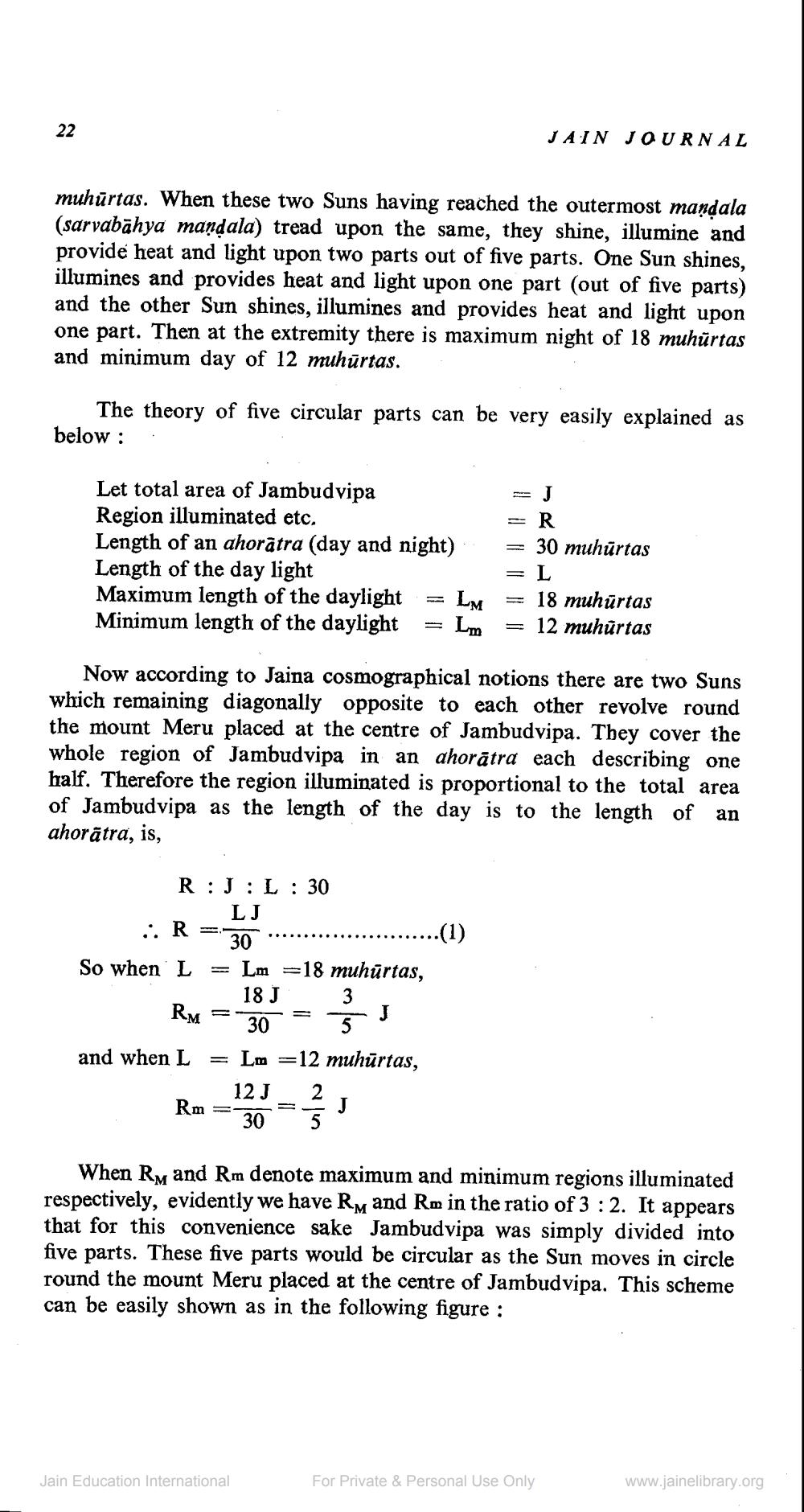________________
22
muhurtas. When these two Suns having reached the outermost maṇḍala (sarvabahya maṇḍala) tread upon the same, they shine, illumine and provide heat and light upon two parts out of five parts. One Sun shines, illumines and provides heat and light upon one part (out of five parts) and the other Sun shines, illumines and provides heat and light upon one part. Then at the extremity there is maximum night of 18 muhurtas and minimum day of 12 muhurtas.
The theory of five circular parts can be very easily explained as below:
Let total area of Jambudvipa
Region illuminated etc.
Length of an ahoratra (day and night) Length of the day light
Maximum length of the daylight Minimum length of the daylight
RJL: 30
LJ
30
= Lm 18 muhūrtas,
18 J
30
= Lm =12 muhurtas,
12 J
30
.. R
So when L
RM
and when L
Now according to Jaina cosmographical notions there are two Suns which remaining diagonally opposite to each other revolve round the mount Meru placed at the centre of Jambudvipa. They cover the whole region of Jambudvipa in an ahoratra each describing one half. Therefore the region illuminated is proportional to the total area of Jambudvipa as the length of the day is to the length of an ahoratra, is,
Rm
=
=
Jain Education International
2
5
43
5
-
J
J
LM
Lm
JAIN JOURNAL
==
..(1)
J
R
30 muhurtas
L
18 muhurtas
12 muhurtas
When RM and Rm denote maximum and minimum regions illuminated respectively, evidently we have RM and Rm in the ratio of 3:2. It appears that for this convenience sake Jambudvipa was simply divided into five parts. These five parts would be circular as the Sun moves in circle round the mount Meru placed at the centre of Jambudvipa. This scheme can be easily shown as in the following figure:
For Private & Personal Use Only
www.jainelibrary.org




